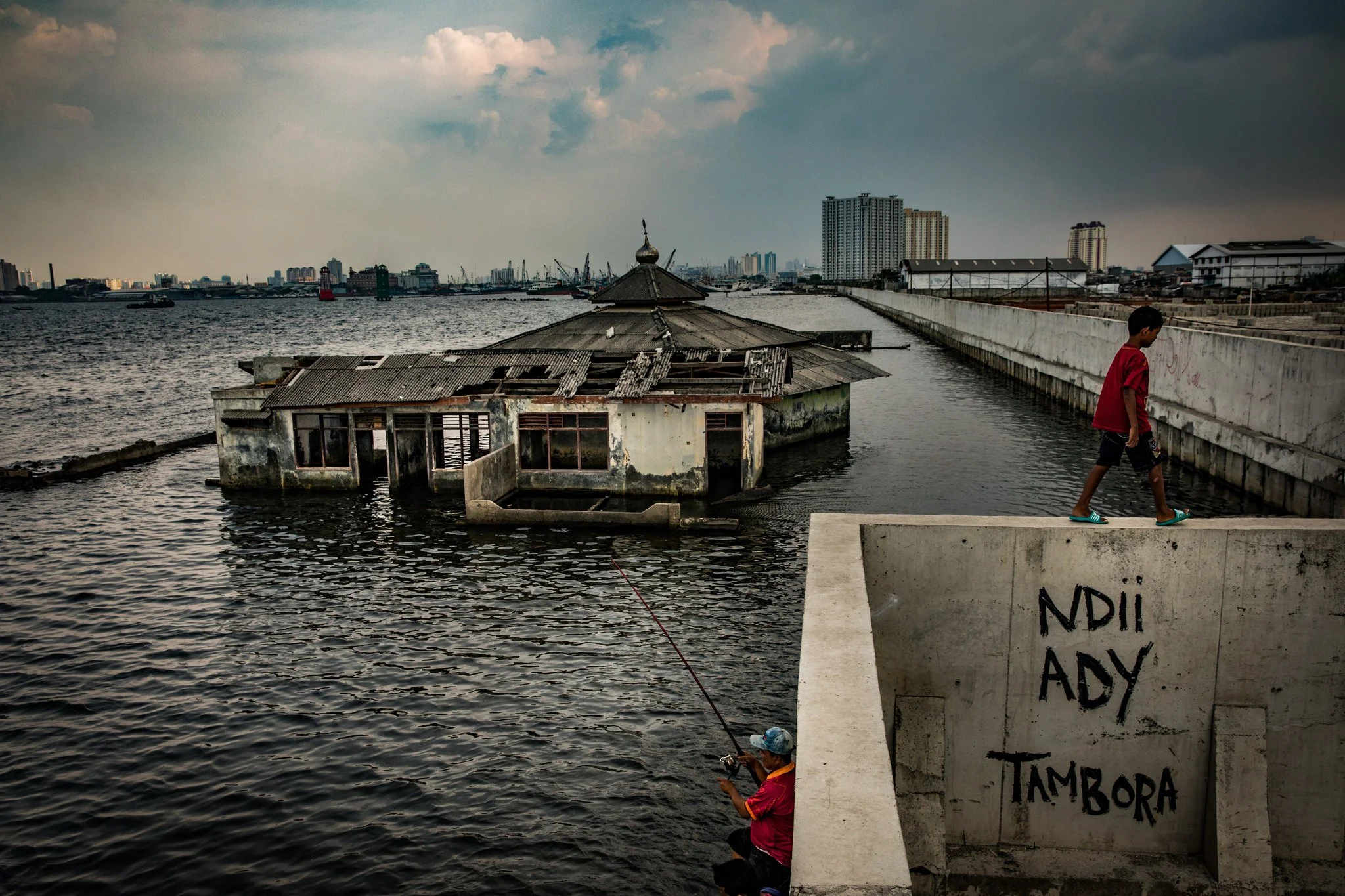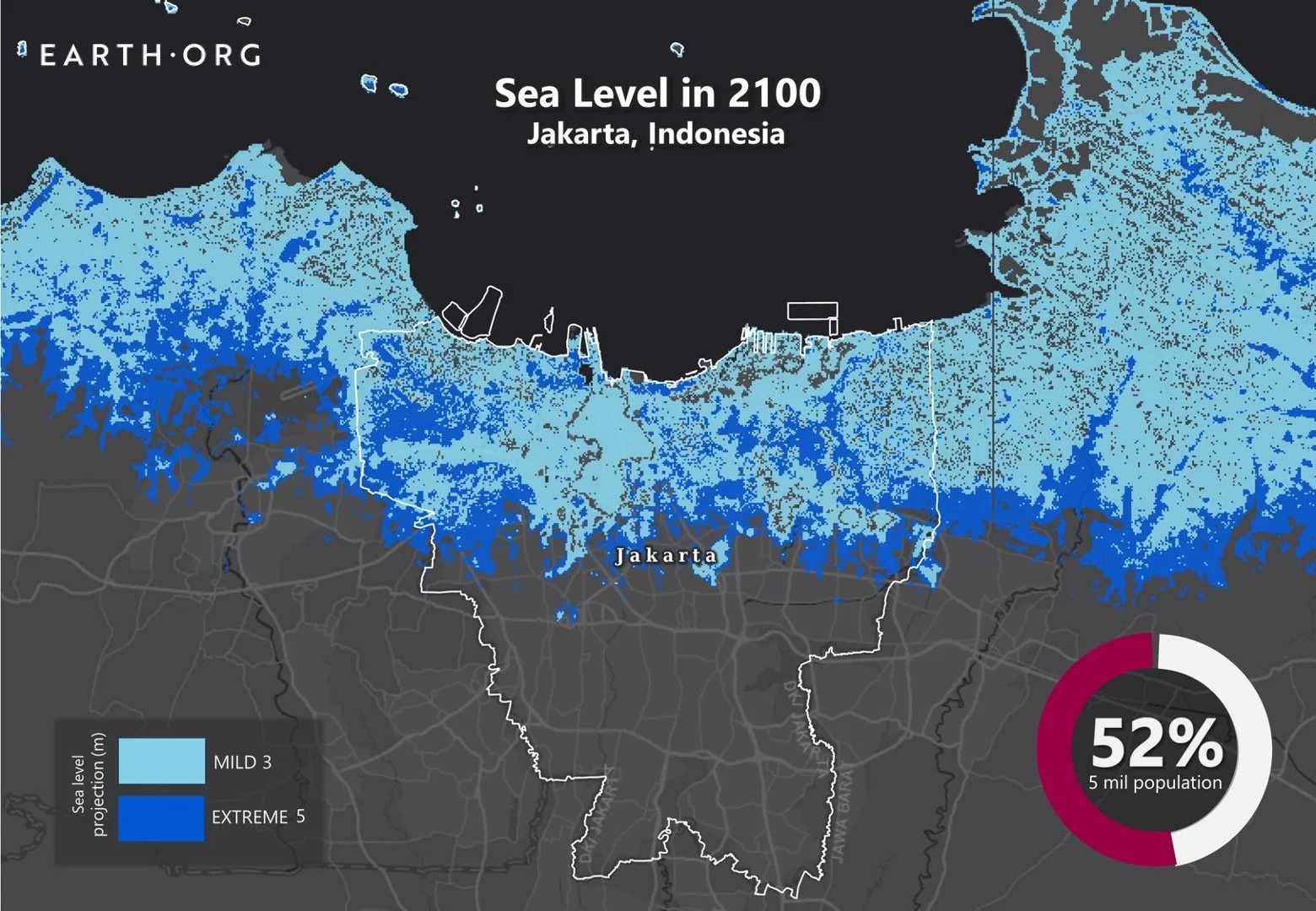Environmental Injustice: Jakarta, The Sinking City
How do our actions affect others? How does climate change disproportionately affect some communities? Environmental injustice is defined as the tracking and study of the unequal effects that environmental issues cause for specific, minority communities; the movement gained traction in the 1990s when a study about the placement of toxic waste was revealed to have affected Black Americans disproportionately, though it first started in the 70s. Now, with temperatures and sea levels rising, our actions hold greater weight than ever; societies facing the disastrous effects of climate change are having to think fast before irreversible harm comes to their citizens and cities. Jakarta, Indonesia is one of the places on Earth feeling the most pressure from environmental concerns.
From The New York Times
Due to the effects of climate change, the city of Jakarta, Indonesia is facing devastating consequences. The sea level is rising rapidly as a result of the melting sea ice, approximately 40% of the city is below sea level with the water level rising ~3.3mm per year, though that number is predicted to grow to 10mm (earthobservatory.nasa.gov). In addition, the changes in atmospheric conditions on account of climate change have caused severe weather pattern shifts with more intense floods and rain- only adding to the impending issue of sinkage. Climate change is also increasing ocean temperatures, thereby altering weather patterns and affecting the frequency and intensity of tropical storms experienced by Jakarta. Sadly, scientists expect that Jakarta will be nearly fully submerged at the end of the century (earth.org)
In 2020, 67 deaths and 300,000 displacements occurred due to the high water levels which further destroyed the city’s weak infrastructure (JBArisk.com). The consistent, heavy amounts of water cause land erosion and subsidence which means many of the 11 million people living in Jakarta may be displaced. The economy and infrastructure aren’t able to withstand the rapid sea level rise and cannot rebuild from destruction fast enough. Jakartan coastal communities are suffering especially as they are in closer proximity to the water, they face higher rates of death, injury, and relocation. This places them in disproportionately high levels of risk and poverty. The city faces $300 million each year in damages on account of sea level rise yet the problem is far from being fixed (Hsiao, 1). Known as the “sinking city” the inhabitants of Jakarta are running out of time to save themselves and their home.
From Earth.org
Though it may seem so, total destruction is not inevitable: the creation of solutions is in place. The construction of a massive seawall and coastal embankment to protect the city from further damage is under construction after the last wall, constructed in 2002, was destroyed in the 2007 flood (nationalgeographic.com). Engineers are focusing on extending the wall and embankment to provide more support and delay the effects of sea level rise and tidal floods. Accompanying these structures will be 17 artificially built islands meant to surround and protect Jakarta. Even with this created, it will still be insufficient for Jakarta’s future so a far grander plan is under construction by the Indonesian government: a new capital city. Nusantara, the city’s new name, is being built on a $35 billion budget 1000 km away on the island of Borneo in an attempt to save the citizens of Jakarta from sinking. Also, Nusantara is trying to combat climate change by being an “all-green smart city” (britannica.com). When faced with environmental devastation, Indonesia found a way to protect the citizens of Jakarta from harm by inventing creative solutions, however, it is also an undeniable truth that the ramifications of climate change have caused irreparable damage to the people of Jakarta.

